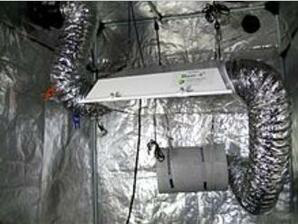Home >> News >> Company News
A plant growth lamp is an artificial light source, usually an electric light source, intended to stimulate plant growth by emitting an electromagnetic spectrum suitable for photosynthesis. Plant lights are used in applications that do not have natural light or need to fill light. For example, in winter, when possible daylight hours may not be sufficient to achieve the desired plant growth, the lights are used to extend the time the plants receive light. If the plants don't get enough light, they will grow up.
The growing light either attempts to provide a spectrum similar to the sun or provides a spectrum that is more suitable for the needs of the plant being cultivated. Simulate outdoor conditions from different colors of growth lamps, temperature and spectral output, and change the lumen output (intensity) of the lamp. Depending on the type of plant being cultivated, the stage of cultivation (such as germination/nutrition or flowering/resulting period) and the photoperiod required by the plant, the specific range of the spectrum, the luminous efficiency and the color temperature are all desirable plants and time periods.
In 1868, the Russian botanist Andrei Famintsyn was the first to use artificial light for plant growth and research.
Typical usage

An example of a high-pressure sodium lamp set in a growing tent. The setup includes an activated carbon filter to remove odors and a hot exhaust fan duct to exhaust hot air.
Plant lights are used for indoor gardening, plant reproduction and food production, including indoor hydroponics and aquatic plants. Although most plant lights are used industrially, they can also be used in the home.
According to the inverse square law, the intensity of the light radiated from the point source (in this case the bulb) reaching the surface is inversely proportional to the square of the distance from the surface source (if an object is twice as far away, it only receives four One-of-a-kind light) This is a serious obstacle for indoor growers, and many techniques are used to use light as efficiently as possible. Therefore, reflectors are often used for lighting to maximize light efficiency. The luminaires or luminaires move as close as possible so that they have the same illumination and all of the light from the lights falls on the plants rather than the surrounding area.
Previous: LED Light Emitting Diode
Next: None